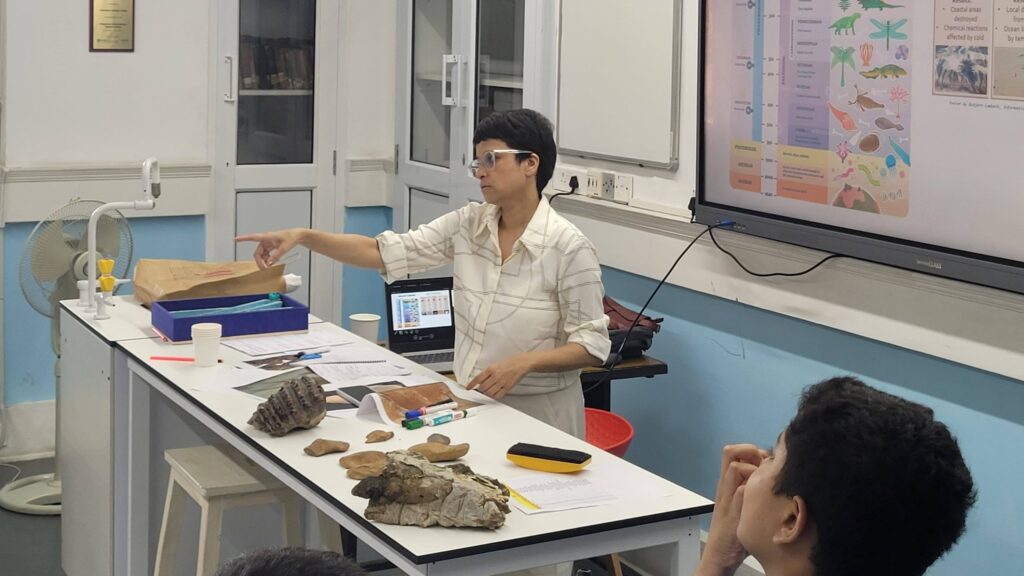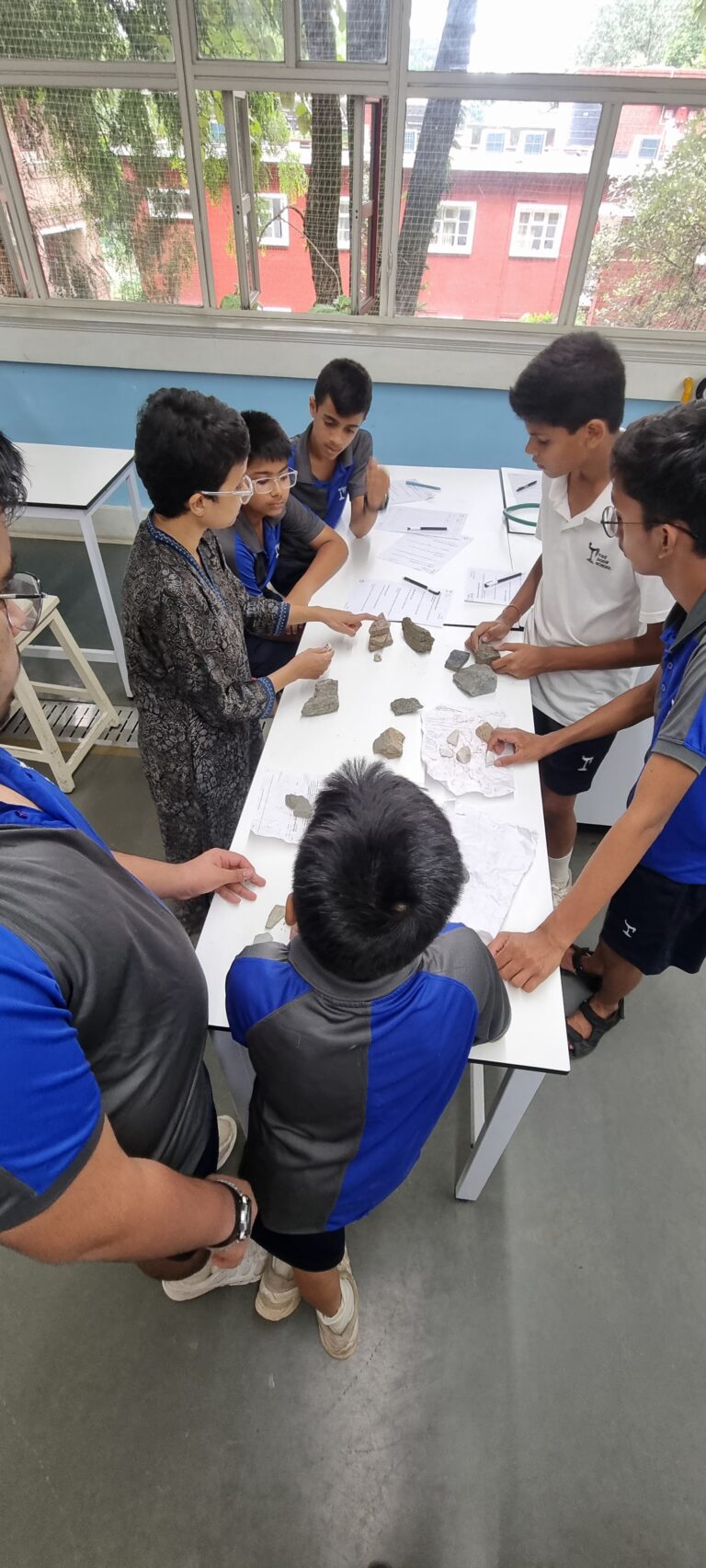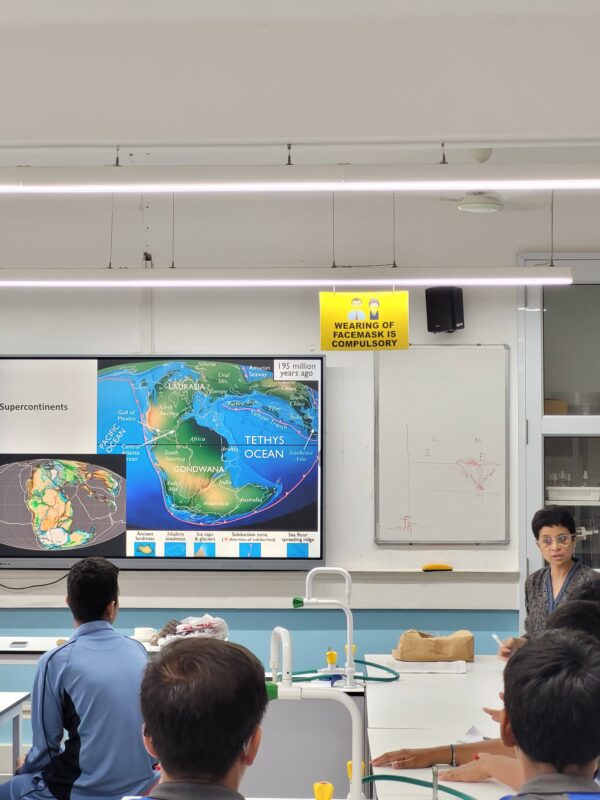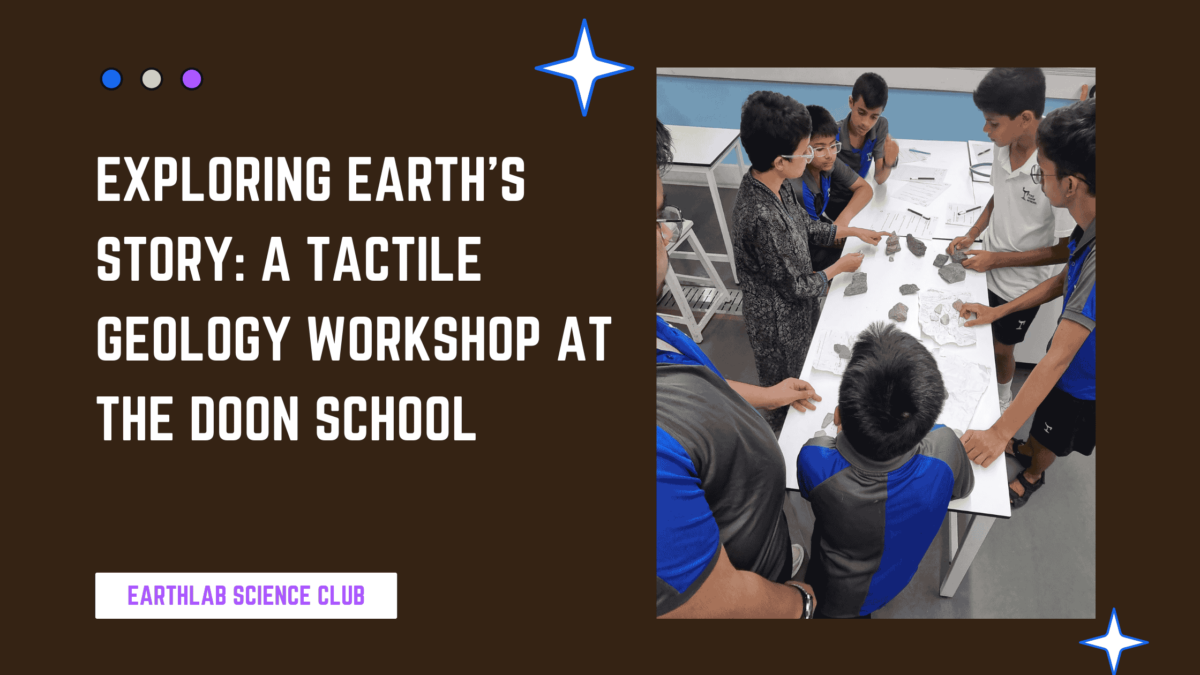What if Theia never collided with Earth? Could we create our own rocks? What creatures today might become fossils in the future? These were just some of the exciting questions raised by students during the Tactile Geography Workshop at The Doon School’s Young Creators Programme—a session designed to make geology and geography a hands-on experience.
Discovering Earth Through the Tactile Geology Workshop
We all study fossils, landscapes, and Earth’s history in textbooks. But how much do we actually remember? Studies show that learning by lecture has only a 5% retention rate, while learning through touch and experience reaches 75%. The Tactile Geology Workshop at The Doon School transformed geography into an interactive, immersive adventure, making Earth’s evolution, terrain, and forces come alive.
Led by Dr. Swapnamita Choudhary, a geologist from the Wadia Institute of Himalayan Geology, students explored Earth’s formation, structure, and natural forces through real fossils and hands-on activities.

Exploring Earth’s Evolution: Tactile Learning in Action
Students traced Earth’s geological timeline, from its molten beginnings 4.6 billion years ago to its collision with Theia, which formed the Moon and tilted Earth’s axis. This shift still influences seasons, tides, and climate today.
With real fossils in hand, they studied the earliest life forms—cyanobacteria, ammonites, and ancient elephant ancestors. These tactile experiences helped them connect with Earth’s past in a way that no textbook can.
The Hands-On Science Behind Earth’s Structure
Through interactive rock classification, students learned to identify igneous, sedimentary, and metamorphic rocks. Working in teams, they analyzed texture, grain size, and transformation processes, making the study of geography and geology a tactile experience.
A discussion on plate tectonics followed, where students discovered how mantle convection moves continents and creates mountain ranges like the Himalayas.
Fossil Debates and Future Discoveries
A lively debate emerged on which animals today might become future fossils. Would it be cockroaches, whales, or even humans? This sparked critical thinking about Earth’s long-term evolution.

Why the Tactile Geology Workshop Made an Impact
The highlight? Handling million-year-old fossils—a moment that deepened students’ curiosity about Earth’s history. They later watched a 3D film on the Origins of Life to extend their learning, linking geology, geography, and astronomy.
The Tactile Geology Workshop—curated by Earthlab Club—did more than teach geography. It immersed students in discovery, inspiring them to explore Earth’s past, present, and future through touch, observation, and debate.

Workshops like the tactile geology workshop, curated by Earthlab Club, create immersive, hands-on experiences that go beyond rote learning, leaving a lasting impact on young minds. By blending exploration, experimentation, and storytelling, Earthlab Club ensures that students gain a deeper understanding of the world around them, making science informative, exciting and memorable.
To learn more about Earthlab and our workshops, reach out to us at info@earthlab.club or WhatsApp us at 9997014663.

